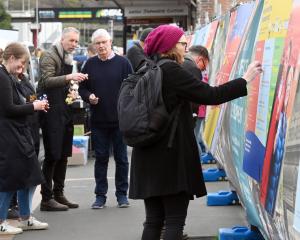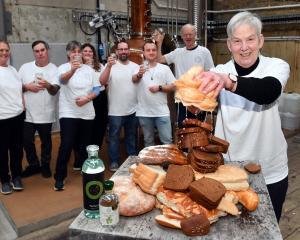
Imagine being able to invest in local energy assets such as a community wind farm or tradable battery storage or being enabled to gift credits on your electricity bill to people struggling in your community. Imagine being able to gift electricity credits to family members or use them for good causes such as housing and climate mitigation.

Last month at the National Māori Housing Conference, in beautiful Rotorua, I heard inspiring stories and tales of incredible resilience in the aftermath of Cyclone Gabrielle.
The climate crisis has been brought into stark focus by recent adverse events. The final part of the IPCC’s huge sixth assessment report released in March was the clearest wake-up call yet: we need to act now before it is too late. We can see in real time what climate chaos looks like: people and animals drowned, cars and homes buried in silt, electricity supplies cut, "slash" washed down flooded waterways, bridges and roads washed away or buried under slips, lives and livelihoods lost.
One thing abundantly clear from the testimonies was the diversity of experiences and responses, communities having to fall back on their own resources. Marae and schools became emergency centres for shelter and food, but whole communities were cut off from critical energy supplies.
The National Party launched its "Electrify NZ" policy while I was in Rotorua, a policy claiming to fast-track new wind, geothermal and solar-power projects, but showing little understanding of the radical shift we need to build a flexible, smart, resilient 21st century electricity system. What will help when the next extreme weather event knocks out infrastructure, or when whole communities are isolated without power or road access? In a climate crisis the risk is that populist politics gain prominence as society struggles with cascading crises: cost of living, housing, flooding ... the list goes on.
The climate crisis requires us to adapt, while we work to rapidly reduce emissions. We need to consider all the things that we need for wellbeing. Things like shelter, energy, food, health. All politicians could learn from the flax-roots leadership we’ve seen emerge. At the Rotorua conference iwi leaders such as Willie Te Aho, from the East Coast of Te Ika-a-Māui/the North Island, exemplified the grit needed to get rapid results when disaster hits. In Rotorua, the Te Urunga o Kea: Te Arawa Climate Change Working Group developed the Te Ara ki Kōpū: Te Arawa Climate Change Strategy, which includes 19 priority actions from "homes, marae, urupā and towns [that] are safe from changing weather, waters and landscapes [and] are able to prepare, adapt, mitigate, respond and recover from emergencies" to "iwi [using] the wind, water and sun on our lands to generate and share our own electricity across our whānau, hapū and marae". Here in Ōtepoti Dunedin, the South Dunedin Community Network engages in community hui on adaptation to sea-level rise and flood risk.
At the flax-roots (and even emerging in industry) there is an understanding of the need for local-area energy planning, climate-safe housing and a sharing economy. It doesn’t matter if it is here in Ōtepoti Dunedin, or in Rotorua, or Hokianga in the far north where Cyclone Gabrielle caused widespread power outages and surges. Local electricity supply through flexible, peer-to-peer electricity can build resilience and ensure energy wellbeing during adverse events. Local ownership of energy assets would allow local decision making and investment in climate-safe housing, so that those affected by adverse events can have a place to call home.
We have many flax-roots champions, including Māori and community solutions on energy and housing that can be scaled up. What’s needed now is a supportive legislative environment so local initiatives can flourish, within a national dynamic, adaptive planning framework focused on climate justice.
Scott Willis is a climate and energy consultant. Each week in this column one of a panel of writers addresses issues of sustainability.












